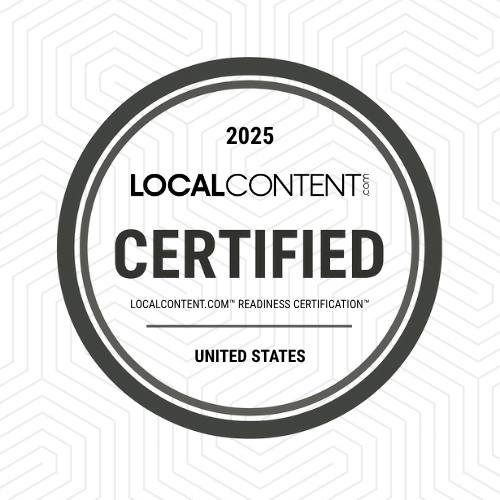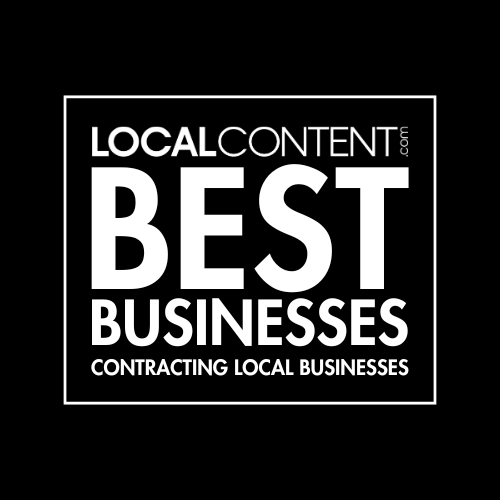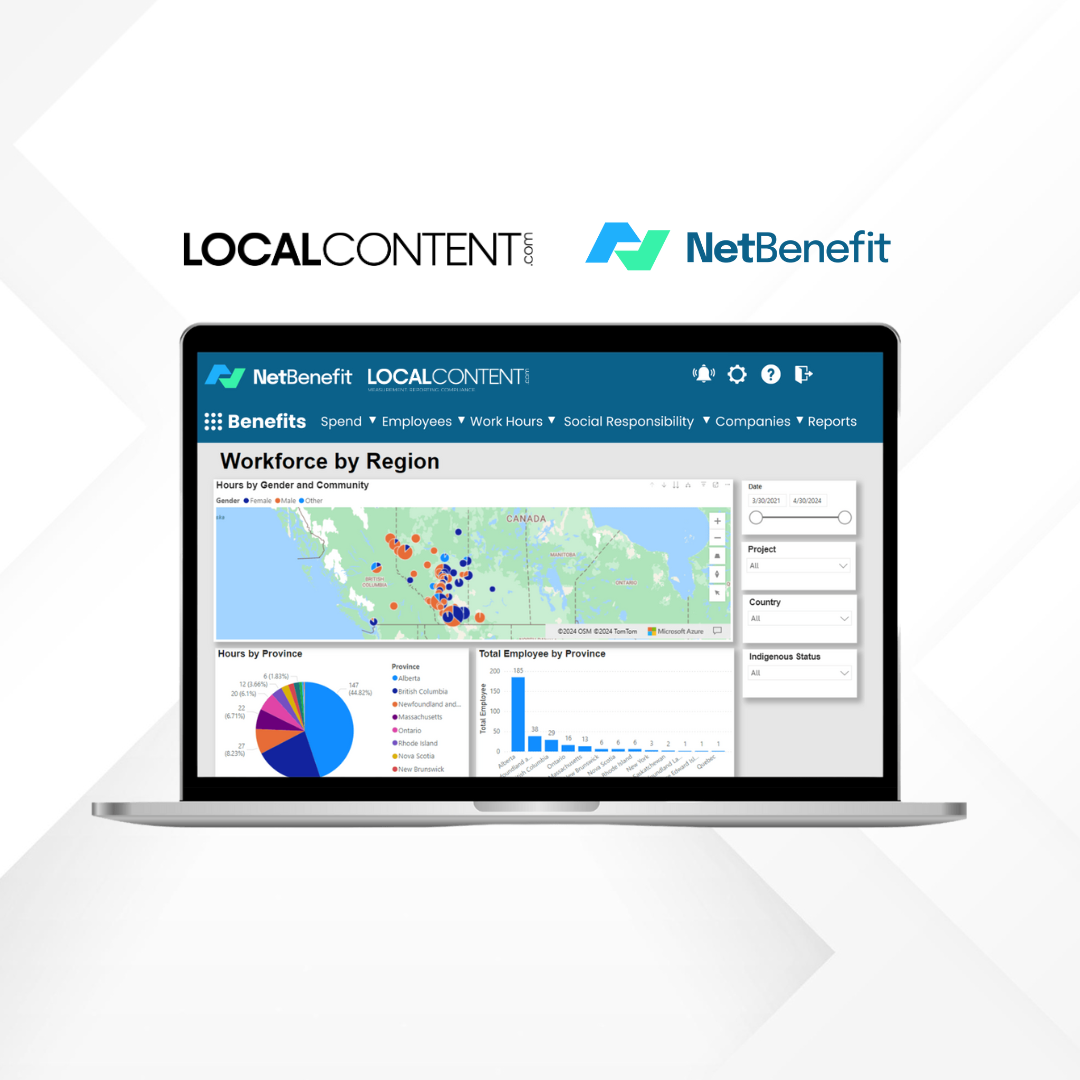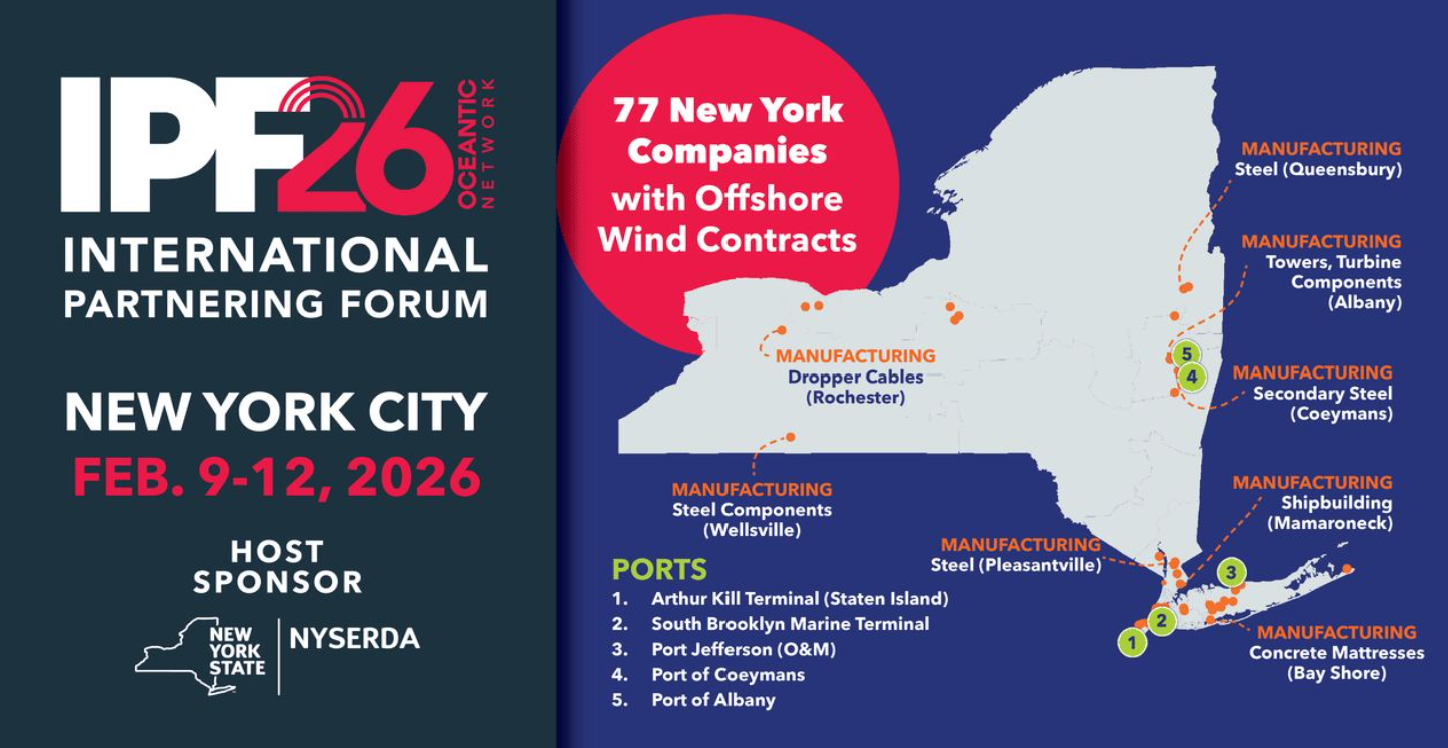(Brooklyn, NYC) – The New York Local Content Insights Series recently made a stop at industry City in Brooklyn’s Sunset Park, hosted at the offices of Brooklyn Chamber of Commerce. Presented by LocalContent.com and powered by offshore wind developer Vineyard Offshore, the event brought together small business and nonprofit leaders to focus on New York’s manufacturing and offshore wind sectors.

The event explored taxpayer opinions, attitudes, and perceptions toward manufacturing and offshore wind, as well as compliance strategies and market competitive advantages gained by mastering local content and U.S. domestic content policies that advance “America First” economic benefits. It also highlighted opportunities within New York’s Climate Leadership and Community Protection Act (CLCPA). Additionally, the event provided market entry insights for New York businesses, with a specific focus on Brooklyn stakeholders looking to join the manufacturing and offshore wind supply chain. Vineyard Offshore presented its proposed Excelsior Wind project in New York, outlining its planned benefits and sharing insights into its past and current small business localization efforts in New England and on the West Coast.

I. Data-Driven Insights
The series is based on LocalContent.com’s methodology, which asserts that public sentiment—encompassing individuals’, organizations’, and industries’ public opinions, attitudes, and perceptions—is a critical component and indicator in the business development process for small businesses and developers. Only through meaningful analysis and the operational incorporation of taxpayer sentiment can businesses, both small and large, gain access to public benefits such as investments, grants, service or product contracts, tax incentives, permits, and licenses. This approach complements traditional stakeholder engagement with real-time, quantitative data, enabling infrastructure projects to more effectively shape their economic, workforce, and community deliverables to meet the needs of local stakeholders, advance local and U.S. domestic content compliance, and mitigate project risks and misinformation.
LocalContent.com’s proprietary insights solutions, powered by advanced data analytics, assess public sentiment by analyzing millions of data points from social media trends, press coverage, and taxpayer digital behavior. These insights, combined with LocalContent.com’s industry knowledge and expertise, create a clearer roadmap for industry leaders, local businesses, community stakeholders, and government entities across both legacy and emerging industries such as manufacturing and offshore wind.
The taxpayer sentiment session was led by LocalContent.com’s Economic Development Director, Dwayne R. Wilkins. It was explained that positive public sentiment toward an industry fosters trust and intentional collaboration among stakeholders, paving the way for small business contracting, workforce training and job creation, and community benefits.
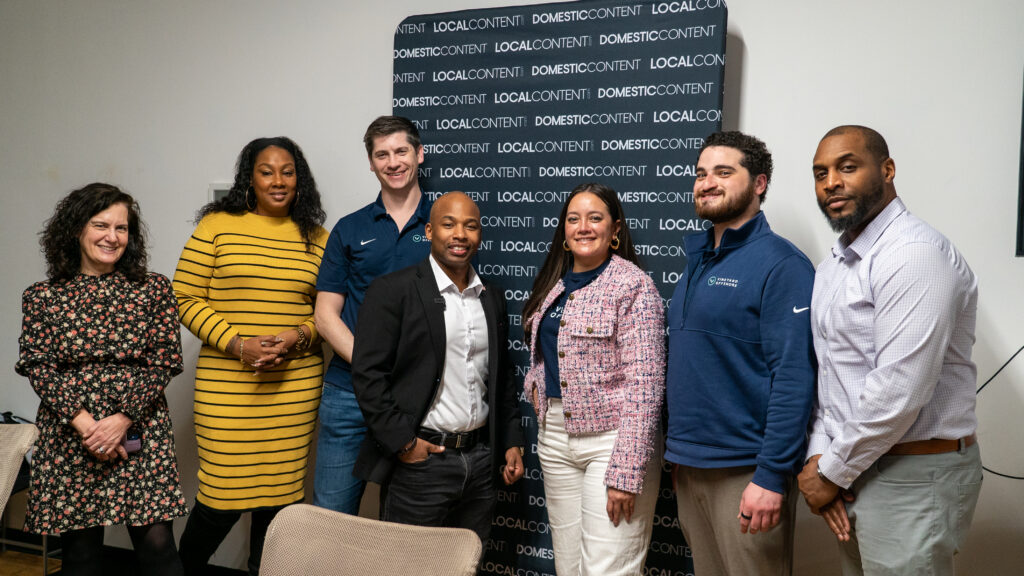
Key Findings from the Event
- Public sentiment on offshore wind in New York improved in 2024 compared to 2023, driven by a more diverse and younger group of contributors.
- 14% of sentiment was positive, 5% negative, and 81% neutral, highlighting a significant opportunity to educate and engage the neutral majority on economic and workforce pathways.
- Online conversations about offshore wind and manufacturing skew toward an older demographic—62% of content originated from authors over the age of 55.
- Sentiment analysis reveals that high topic neutrality is linked to news coverage, while increased negativity is tied to discussions on non-news platforms.
Full access to the data from this session will be available the week of February 10 via Local Content Basic Subscription. These insights are being made freely available to the public, thanks to Vineyard Offshore.
The findings highlight strong public support for manufacturing and offshore wind while also indicating that neutral stakeholders require additional outreach and education from community, industry, and government leaders to maximize benefits for Broooklyn residents.
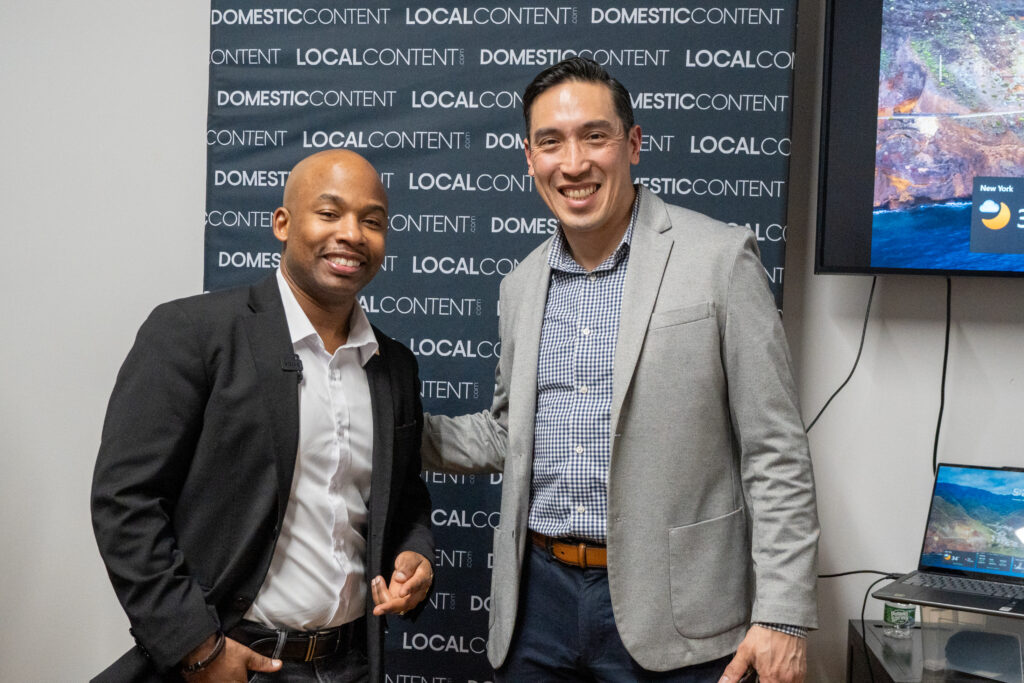
II. Business Development and Supply Chain Resources
Attendees gained practical strategies to address business development and workforce readiness opportunities and challenges. They were also introduced to key supply chain databases that help project owners identify qualified businesses for contracting opportunities. These resources included:
- NYSERDA’s Offshore Wind Supplier Database
- Local Content Exchange B2B/B2G Marketplace
- Oceanic Network’s Supply Chain Connect
III. Regulatory Compliance and U.S. Domestic Content
During the event, they learned that the New York’s Climate Leadership and Community Protection Act CLCPA commits to achieving 100% zero-emission electricity by 2040, sets legally binding emissions reduction standards to transition New York off fossil fuels entirely by 2050, and mandates that 40% of state climate and energy funding be invested in disproportionately disadvantaged communities.
Additionally, as required by New York State, attendees explored strategies to ensure the inclusion of New York-based businesses, particularly local, small, and diverse businesses (MWBEs and SDVOBs), in climate and energy projects. Best practices were shared on leveraging the CLCPA’s 40% investment mandate, which provides critical resources for small businesses entering the clean energy sector to subcontract and hire from disadvantaged communities across the state.
For attending businesses that were at least 51% women-, veteran-, and/or minority-owned, a regulatory framework was provided to encourage certification as a Minority/Women-Owned Business Enterprise (MWBE) or a Service-Disabled Veteran-Owned Small Business (SDVOB). While not every business may qualify for MWBE or SDVOB certification or be located within a disadvantaged community, attendees learned how to integrate these regulatory requirements into their operations to enhance compliance, visibility, and business opportunities. This included guidance on using New York’s MWBE and SDVOB directory and the NYSERDA disadvantaged community map to source suppliers and verify geographic eligibility.
By focusing on supply chain data collection and local content state regulatory requirements, small businesses and nonprofits can strengthen their ability to access public-private investments, contracts, grants, tax credits, loans, bid solicitations, and regulatory permitting support—reinforcing U.S. manufacturing and infrastructure resilience for economic growth and national security.

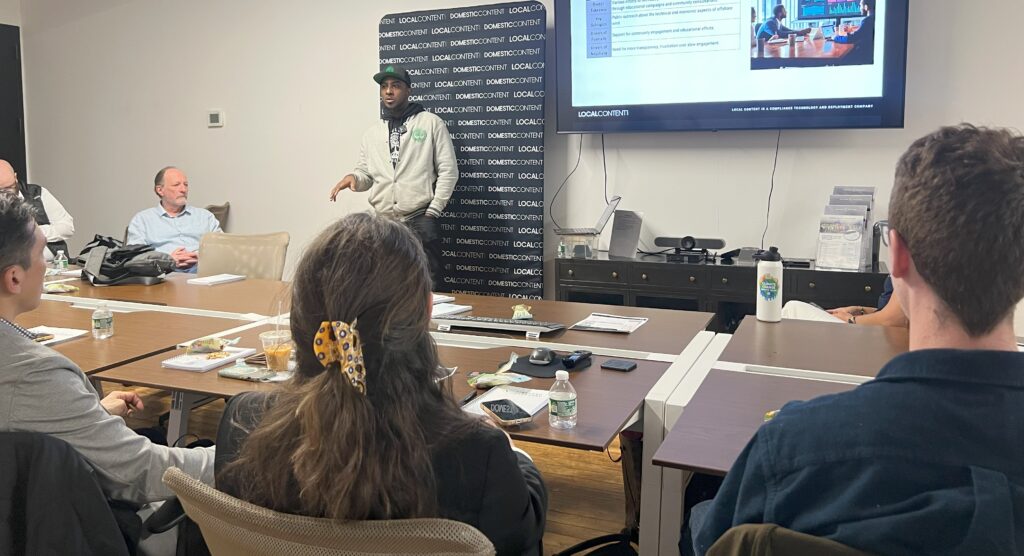
IV. Industry Perspectives from Brooklyn and New York Small Businesses
Both Brooklyn and New York business leaders shared their expertise on market entry strategies and economic opportunities in New York’s offshore wind and manufacturing industries. Speakers included:
- Phil Rugile, Executive Director of the Institute for Workforce Advancement (IWA), and Jessie Solomon, Executive Director of the South Brooklyn Industrial Development Corporation (SBIDC), are leading efforts to strengthen regional industrial sectors by providing insights.
- The Institute for Workforce Advancement (IWA) is dedicated to developing innovative workforce solutions that prepare local talent for emerging industries, including offshore wind and advanced manufacturing. The South Brooklyn Industrial Development Corporation (SBIDC) supports and advocates for Brooklyn’s industrial businesses, providing resources, technical assistance, and connections to economic opportunities.
- Phil Rugile and Jessie Solomon also highlighted their partnership on Wind Connections, the first NYC-centric newsletter dedicated to covering the offshore wind industry for local small businesses. Wind Connections, published monthly, is a collaboration with the BOC Network, aimed at keeping businesses informed and connected to opportunities in this growing sector.
- Dwayne R. Norris, Co-Founder & COO of Soulful Synergy, spoke about his company’s mission to empower communities through workforce development, sustainability initiatives, and economic opportunities. Soulful Synergy specializes in providing training programs, business support, and community engagement strategies to create a more inclusive and equitable workforce, particularly in emerging industries like offshore wind.
- Dina Rabiner, Vice President of Economic Development & Strategic Partnerships at the Brooklyn Chamber of Commerce, spoke about the various series the Chamber provides to support local businesses, including workforce development initiatives, networking opportunities, and educational programs designed to help small businesses.
V. Vineyard Offshore’s Excelsior Wind Project
The session concluded with a presentation from Vineyard Offshore’s team members including:
- Andrea Bonilla, External Affairs Manager
- Blake Hyatt, New York Labor Relations Manager
- Aaron Siegel, New York Community Liaison
- Ali Alrayes, Senior Manager of Business Development
Their team participated in market discussions, detailed their supply chain development work, and reiterated their commitment to a “local first” approach across their U.S. portfolio, including the nation’s first commercial-scale offshore wind energy project, located over 15 miles off the coast of Massachusetts, as well as projects in Connecticut, Rhode Island, and California. For this New York based supply chain focused event Vineyard Offshore spoke about Excelsior Wind, Vineyard Offshore’s proposed 1.3 GW offshore wind project, is expected to deliver $2.6 billion in direct economic benefits to New York.
Excelsior Wind Project Highlights Include
- Community Investments: 35-40% of spending—up to $578 million by year three—dedicated to disadvantaged communities.
- Job Creation: Over 2,000 direct jobs and 5,200 job-years created, with a commitment to union labor and project labor agreements.
- Workforce Development: A $50 million commitment to workforce training, supply chain support, and environmental initiatives, including $39 million for MWBE/SDVOB upskilling.
- Infrastructure Investments: Development of New York ports, upstate supply chains, and Long Island infrastructure to support offshore wind expansion.
- Innovation: Features fast-install transmission technology at its Jones Beach landfall site, minimizing community impact while maximizing economic and environmental benefits.
Attendees and the general public can access
For the full Vineyard Offshore Contracting Orientation presentation, please HERE.

VI. Next Steps for Staten Island Businesses
Attendees were encouraged to engage with other offshore wind projects in the region that are at more immediate supply chain contract opportunity timelines. This strategy will help small businesses gain further supply chain market entry and industry experience, preparing them for future offshore wind opportunities. Some of the recommended projects included:
- South Fork Wind Farm (New York)
- Empire Wind 1 (New York)
- Sunrise Wind (New York)
- Atlantic Shores Offshore Wind (New Jersey)
- Revolution Wind (Connecticut and Rhode Island)
In addition to registering as a supplier within the leading industry supply chain databases mentioned earlier, businesses must remain opportunity-ready from both an operational and compliance reporting standpoint. LocalContent.com recommended the following calls to action to the attendees:
- Leverage past performance to establish credibility in the market, including updating capability statements. Align operations with state regulations to qualify for new funding and contracts, with a focus on internal supply chain and workforce data collection.
- Determine supply chain tier early to save time and resources by engaging with the right buyers in offshore wind and manufacturing projects.
Brooklyn continues to lead by example, fostering trust, collaboration, and economic opportunities for its small business community in New York’s clean energy and manufacturing sectors.
###


